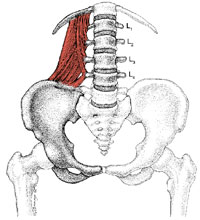Unilateral increased tibial varum; one reason why...
/Take a look at this gent in the picture. Do you notice anything peculiar? Pick a point and start either moving from above down or from the ground up.
From the ground up, the first thing you may notice is that he has a hallux abducto valgus on the right side. This could be for any number of reasons and what it actually tells you is that he is unable to anchor his first ray to the ground and have appropriate function of the adductor hallucis. Your job, during the examination process, is to sort that out.
The second thing you may notice is that he has more midfoot collapse on this same side. You would think that with that much midfoot collapse he would get his first ray to the ground but that’s obviously not the case.
Moving up from there, you may have noticed that he has significantly more tibial varum on the left-hand side. Tibial varum should be about 4-6 degrees and is largely a function of in utero positioning although diseases like osteomalacia and rickets can increase it though this is often more bilaterally symmetrical.
You need to be aware increased tibial varum means that the foot, particularly the forefoot, needs to pronate a greater degree to create a stable foot tripod on the ground. You need to ensure during the examination process that adequate range of motion in the forefoot and 1st ray are available.
You may have noticed that there is prominence of the left medial head of the gastroc which is most likely a combination of positioning as well as increased mechanical advantage secondary to the varum.
Hopefully you noticed that the knees are (relatively) in the sagittal plane and that there’s an increase progression angle on the left-hand side. If you drop a plumbline from the tibial tuberosity you’ll see the falls medial to the second metatarsal shaft indicating external tibial torsion in the lower extremity.
The unilateral increased tibial varum on the left-hand side is secondary to an anatomical leg length discrepancy where the right tibia is shorter. This has been long-standing and in compensation, the left tibia has “bowed“ to compensate for the difference, In an attempt to shorten the left leg.
Dr Ivo Waerlop, one of The Gait Guys
Like this stuff? Come and drink from the fire hydrant. Consider joining us this Wednesday evening on online CE.com for bio mechanics 326, 6 PM Mountain standard time. Likewise, you can become a Patreon supporter and get this kind of information every week.
#tibialvarum #leglengthdiscrepancy #lld #bowedlegs #pronation


















